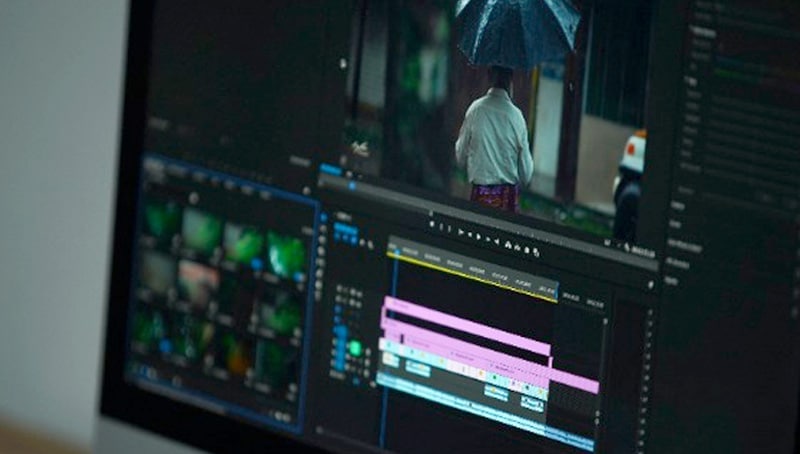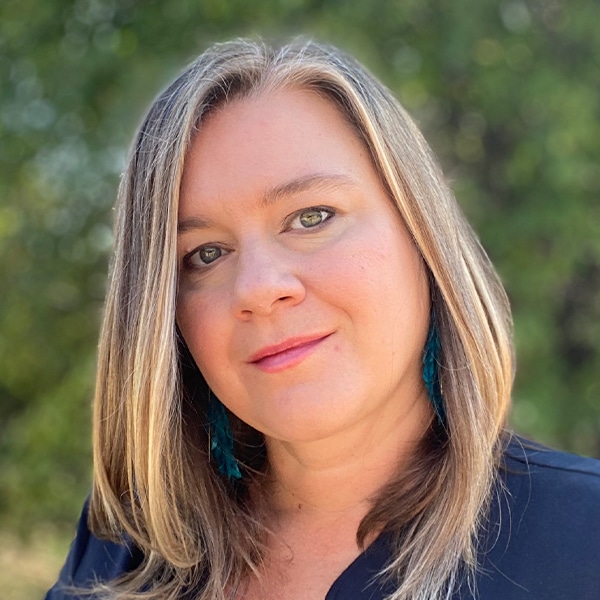FLM 102: Editing
Make Editing Your Superpower
As a film or video editor you are storyteller with the power to affect your viewer in ways you may not even imagine. In this course, you'll study the tools and techniques used by professional editors, learning the basics of how to manage projects in Premiere as you explore how editing affects the pacing and mood of a scene. Lectures on montage, coverage, and B-roll explore how creative editors make the connections between each shot that pull a scene together. In final project, students demonstrate the ability to edit a set of footage in two distinct moods.

About This Course
Project-Based Learning
Dig deep into the editing process by assembling video sequences using multiples strategies to create a mood in service of intent while considering camera movement, pacing, and telling a story by intercutting b-roll and multiple views.
What Skills Will I Develop?
Students in this course can expect to learn to:
- Apply foundation concepts in non-linear video editing.
- Develop a basic proficiency with the tools and techniques for editing video using Adobe Premiere.
- Edit video projects with consideration for camera angles, shots, and framing.
- Create shot sequences that exhibit continuity and effective storytelling.
- Apply basic techniques for mixing a soundtrack incorporating the human voice, ambient noise, sound effects, and music. Apply techniques to expand or compress the perception of time in a shot sequence.
- Analyze the use of coverage and B-roll in creating movie sequences.
- Shoot, edit, and intercut two scenes with a control over pacing and storytelling.
- Edit a scene closely to achieve the blueprint provided by a director's script.
- Reimagine a scene by using editing techniques to alter its mood, pacing, or narrative outcome.
What Software and Supplies Do I Need?
- Computer with a minimum internet connection speed of 512 kbps. Broadband is strongly recommended.
- Adobe Premiere Pro software (course instruction is tailored to this platform).
Students using other non-linear editing programs (e.g., Final Cut Pro, DaVinci Resolve) are welcome to join the class, but should be prepared to adapt to differences in interface and features. - Access to a digital video camera or a smartphone capable of capturing high-quality video.
- Ability to transfer video from camera/smartphone to computer.
Are There Course Prerequisites?
FLM 101 Cinematography is the prerequisite for this course or the courses can be taken concurrently.
If you have any questions about this course, please contact Admissions@sessions.edu.
Course Instructor(s)
The course is taught by the following instructor(s):
 Natalie La Scala
Natalie La Scala
Natalie La Scala is a Denver-based media artist with 20 years of work experience in creative direction, project management, and higher education. Recent clients include Z1CareerZone, Engage, LLC, and the Performing Arts Academy.
View all Faculty
Course Outline
The Role of an Editor
As a film or video editor, your goal is to deliver a message while making the transition from element to element seamless, if not invisible. In this course, we will study non-linear editing software and the psychology of cinematic storytelling, while producing with Adobe Premiere editing tools and the principles of film editing.
Basic Editing in Adobe Premiere – Part I
This lecture will provide a primer on how to get footage onto your computer and begin editing with Adobe Premiere. Starting with a tour of the interface, you’ll explore how to organize your footage, how to create sequences, and more.
Cinematic Storytelling
To do a professional job as an editor, you'll need a solid understanding of how directors set up and frame shots. In this lecture, we'll discuss how different shot types and shot sequences contribute to the logic and pacing of your story and how they can fit into a larger story structure.
Basic Editing in Adobe Premiere – Part II
This lecture shows you more editing tools that are available through Adobe Premiere. You’ll also explore other areas of post production editing like using the Pen Tool and keyframes to edit audio volume and applying color correction with Lumetri Color.
The Power of Sound
Without sound, the power of an image is limited. As we watch a cinematic story, the image lays behind the screen while the sound creeps into our physical space surrounding us as it reaches our ears. Activating our sense of hearing is a way for cinema to infiltrate our reality and impact our emotional response. As cinematic story tellers, we can harness the power of sound to make a greater impact on the viewer's cinematic experience.
Pacing and Feeling
Explore how the pacing can affect the emotional temperature of a film. All editors are experts in how to manipulate time. Through their editing choices, minutes can seem like they take hours, or hours can be compressed into minutes. Balance can be created by the decision of how long to make each shot, and when to move from one shot to the next.
Montage, Post Effectives & Color
This module is packed with insights on how to create stories out of a montage, a series of shots. In Montage, Action, Dialectics, and Space, we'll look at ways to create connections between shots: graphic, spacial, rhythmic, and temporal, exploring some important landmarks in filmmaking.
Final Project: Contrasting Moods
The cinematographer and director establish a sense of space, and the editor adds a sense of time. In this final project you will demonstrate your ability to generate these different feelings, and your flexibility as an editor. You will act as a traditional editor, following the script and faithfully bringing the director's vision to life.
Frequently Asked Questions (FAQ)
How Do The Courses Work?
Our courses are project-based and instructor-led. In each course you’ll complete a series of lectures, projects, discussions, and critiques designed to stretch your creative skills. Weekly assignment deadlines keep you on track, and with no set-logins or Zoom meetings, you can build your studies around your schedule.
Who Are The Instructors?
Our courses are developed and taught by our industry-leading faculty of creative professionals. This means that you’ll learn in-demand skills, get feedback on your work, and build a portfolio of creative work. View our Student Gallery for featured student projects.
When Can I Start?
Classes start January, April, and August, and this course is completed in a 15-week term. College credit from this course can be applied to a range of Degree and Certificate programs at Sessions College. You can enroll in this course on an individual basis or as part of a program.
Explore our Programs: Bachelor's Degree | Associate Degree | Undergraduate Certificate
How Do I Register?
To register for a program, complete our program application. To register for this course on an individual basis, please contact our admissions team at admissions@sessions.edu. An Admissions Advisor will contact you to setup your enrollment.
| Course Tuition and Fees | |
|---|---|
| Tuition | $350/credit |
| Registration Fee* | $200 |
| Total Course Price | $1250 |
Registration fees are nonrefundable after 5 days from enrollment.
Is Sessions College Accredited?
Yes. Since 2001, Sessions College has been accredited by the Distance Education Accrediting Commission (DEAC). The Distance Education Accrediting Commission is listed by the U.S. Department of Education as a recognized accrediting agency and is recognized by the Council for Higher Education Accreditation (CHEA).
RELATED PROGRAMS AT SESSIONS COLLEGE:

